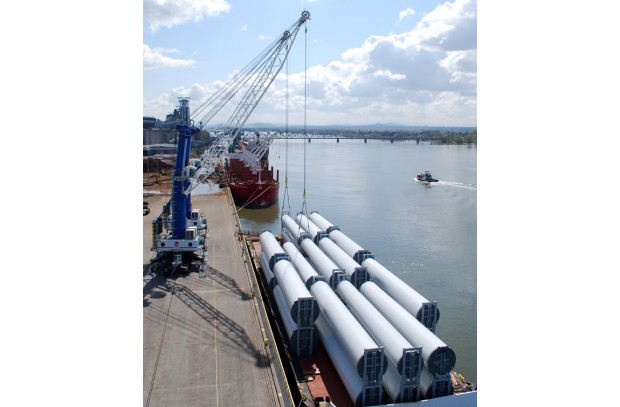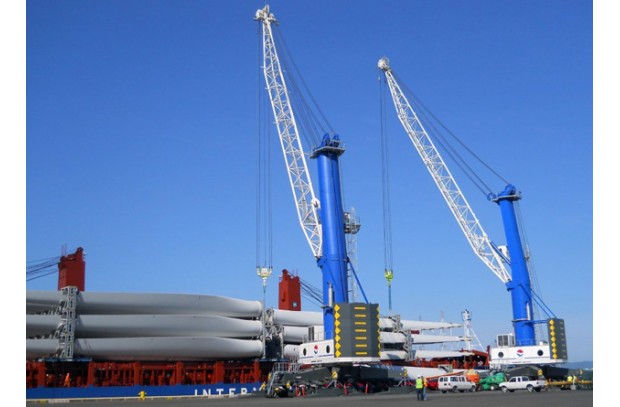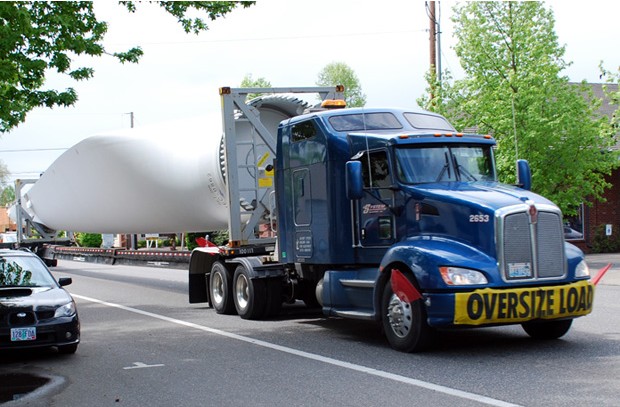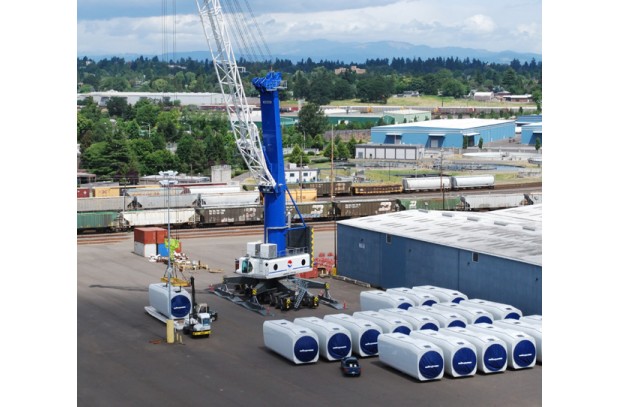The Port Catches the Drift
September 2001- The port joins in wind energy creation.
The Port of Vancouver began handling wind energy cargo imports in 2001 when a vessel carrying 40 windmills arrived at the port. The windmills were manufactured by Vestas Group of Denmark and were destined for a wind farm west of Walla Walla, Washington.
Today, the Port of Vancouver is the exclusive entry point for all Vestas wind energy projects in the Columbia River region; and in 2009, the U.S. Census Bureau declared the Port of Vancouver the nation’s leading port for handling wind energy cargo.
With two of the largest mobile harbor cranes in North America, a highly skilled workforce, and enough land to stage and store these massive and heavy parts, Vancouver continues to build its reputation as the go-to port on the West Coast when it comes to handling heavy-lift cargo.
If you travel by the port, you will often see acres of wind energy components at various stages of transport. Once these parts are connected, one turbine generates enough electricity to power 350-500 homes.
According to the American Wind Energy Association, wind energy facilities installed in the U.S. will produce as much electricity annually as 2.3 million average American households use, and will displace emissions of more than 15 million tons of carbon dioxide (the leading greenhouse gas) annually.
The handling of wind energy cargo, in response to the nation’s growing commitment to renewable energy, is just one example of the Port of Vancouver’s ability to safely and efficiently handle really big stuff!
« See all stories







